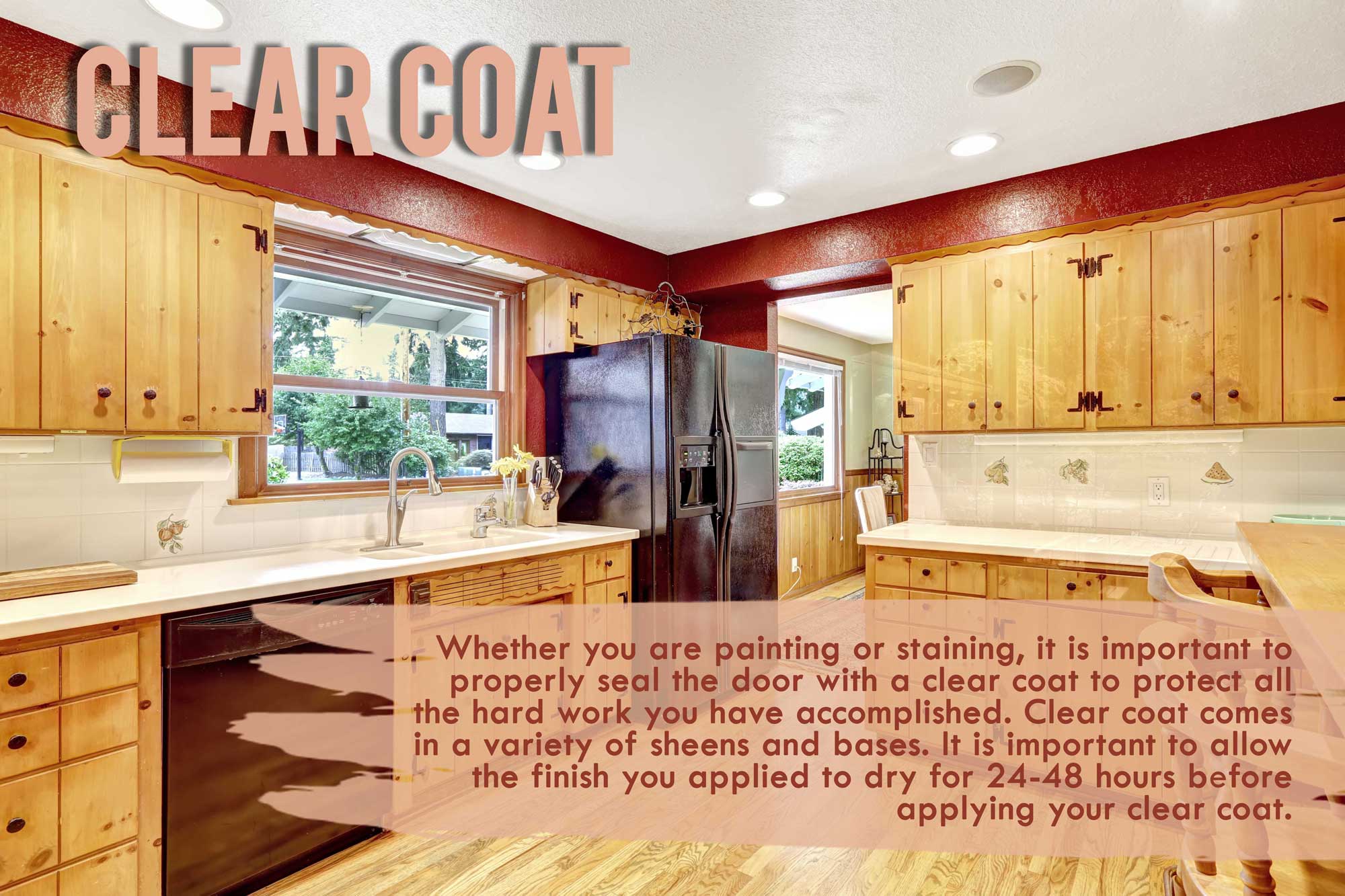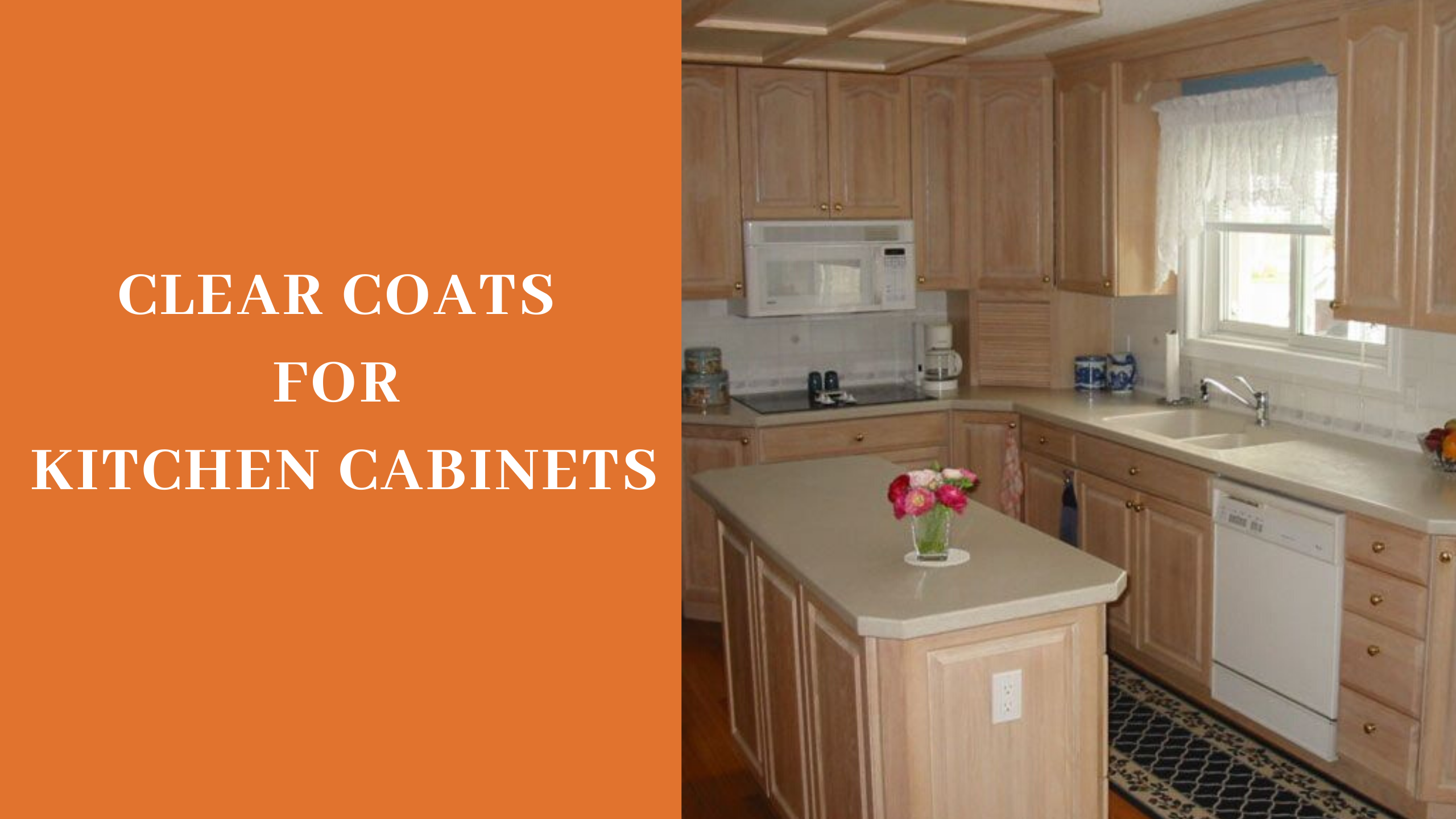Types of Clear Coats for Painted Cabinets: What Clear Coat To Use On Painted Cabinets
Choosing the right clear coat is crucial for protecting your beautifully painted cabinets and ensuring their longevity. The type of clear coat you select will significantly impact the final look, durability, and ease of application. This guide will explore several popular options, helping you make an informed decision.
Clear Coat Comparison
Selecting the right clear coat depends on several factors, including desired sheen, drying time, and durability requirements. The table below compares four common types.
| Type | Drying Time | Durability | Sheen Options | Application Method |
|---|---|---|---|---|
| Polyurethane | Several hours to overnight (depending on type and conditions) | Very high; resistant to scratches, water, and chemicals | High-gloss, semi-gloss, satin, matte | Brush, roller, spray |
| Lacquer | Very fast; often dry to the touch within minutes | High; durable but can be more susceptible to scratches than polyurethane | High-gloss, semi-gloss, satin | Spray (most common), brush |
| Varnish | Several hours to a day or more | High; offers good protection against wear and tear | High-gloss, semi-gloss, satin, matte | Brush, roller |
| Shellac | Very fast; dries within minutes | Moderate; less durable than polyurethane or varnish, more susceptible to water damage | High-gloss, satin | Brush, spray |
Pros and Cons of Each Clear Coat Type
Each clear coat type offers a unique set of advantages and disadvantages for cabinet application.
What clear coat to use on painted cabinets – Polyurethane: Polyurethane is known for its exceptional durability and resistance to scratches and water damage. It’s a popular choice for high-traffic areas. However, it has a longer drying time compared to other options and requires careful application to avoid brush strokes.
Lacquer: Lacquer dries incredibly fast, making it a great choice for those seeking a quick turnaround. Its high gloss finish is also attractive. However, it can be more sensitive to scratches than polyurethane and requires a well-ventilated area due to strong fumes during application. Sprays are generally preferred for even application.
Varnish: Varnish offers a good balance between durability and ease of application. It provides excellent protection against wear and tear and is available in a wide range of sheens. However, its drying time can be longer than lacquer.
Shellac: Shellac is a natural resin-based finish that offers a beautiful, warm look. It’s easy to apply and dries quickly. However, it’s less durable than polyurethane or varnish and is more susceptible to water damage, making it less suitable for kitchen cabinets.
Sheen Levels
The sheen of a clear coat significantly impacts the final appearance of your cabinets. Imagine four samples, each with a different sheen.
High-gloss: This sheen produces a very reflective surface with a mirror-like appearance. It shows imperfections easily, requiring a very smooth paint job underneath. Think of a freshly polished car—that’s the level of shine.
Semi-gloss: This offers a good balance between shine and reflection. It’s less reflective than high-gloss but still provides a noticeable sheen. It’s a durable and easy-to-clean option.
Satin: Satin provides a soft, subtle sheen. It’s less reflective than semi-gloss and hides imperfections better. It’s a popular choice for a more understated look.
Matte: Matte has almost no shine at all, creating a flat, non-reflective finish. It’s excellent at hiding imperfections but may require more maintenance due to its non-reflective surface.
Application Methods and Techniques

Applying a clear coat to your freshly painted cabinets might seem daunting, but with the right approach and techniques, you can achieve a professional-looking finish that will last for years. This section will guide you through the entire process, from preparation to cleanup, ensuring you get the best possible results. Remember, patience and meticulous attention to detail are key to success.
The success of your clear coat application hinges heavily on proper preparation and the chosen application method. Each method—brushing, spraying, or rolling—has its own nuances and requires a slightly different approach. Understanding these differences will help you select the best technique for your project and skill level.
Surface Preparation
Thorough surface preparation is paramount for a flawless finish. Begin by carefully cleaning the painted cabinet surfaces with a tack cloth or a slightly damp lint-free cloth to remove any dust, debris, or loose paint particles. Allow the cabinets to dry completely before proceeding. Any imperfections in the underlying paint job, such as drips or runs, should be lightly sanded smooth using fine-grit sandpaper (220-grit or higher). After sanding, thoroughly wipe down the surfaces again with a tack cloth to remove sanding dust. This meticulous cleaning will prevent imperfections from being trapped under the clear coat. Failing to adequately prepare the surface can lead to a less-than-perfect finish.
Application Techniques
Choosing the right application method depends on your experience level and the size of the project. Each method offers unique advantages and disadvantages.
- Brushing: This method is ideal for smaller projects or hard-to-reach areas. Use a high-quality, natural-bristle brush designed for clear coats. Apply thin, even coats, working in the direction of the wood grain. Avoid overloading the brush, as this can lead to runs and drips.
- Spraying: Spraying provides a very smooth, even finish, but requires specialized equipment (an HVLP sprayer is recommended) and a well-ventilated area. Use a high-quality clear coat formulated for spraying. Apply multiple thin coats, allowing each coat to dry completely before applying the next.
- Rolling: Rolling is a good option for larger projects, offering a balance between ease of use and a relatively smooth finish. Use a high-quality foam roller with a short nap. Apply thin, even coats, working in a smooth, consistent motion. Avoid overlapping strokes excessively, as this can cause uneven buildup.
Best Practices for a Smooth Finish
Achieving a smooth, even finish free of imperfections requires careful attention to detail and consistent technique. The following best practices will significantly improve your results.
- Use thin coats: Multiple thin coats are always better than one thick coat. Thick coats are more prone to runs, drips, and other imperfections. Allow each coat to dry completely before applying the next.
- Maintain consistent application pressure: Whether brushing, spraying, or rolling, maintain a consistent pressure to ensure an even coat thickness. Varying pressure can lead to unevenness in the finish.
- Work in a well-ventilated area: Proper ventilation is crucial, especially when using spray applications, to prevent the buildup of harmful fumes and ensure proper drying.
- Use a high-quality clear coat: The quality of the clear coat directly impacts the final finish. Invest in a premium product designed for the specific type of paint used on your cabinets.
- Sand lightly between coats (optional): For exceptionally smooth finishes, lightly sand between coats using very fine-grit sandpaper (320-grit or higher). This will remove any minor imperfections before applying the next coat.
Troubleshooting Common Problems
Even with careful preparation and application, problems can sometimes arise. Here’s a troubleshooting guide to help you address common issues.
| Problem | Solution |
|---|---|
| Bubbling | This often indicates the underlying paint wasn’t fully cured or the clear coat was applied too thickly. Allow ample drying time between coats. Sand lightly and reapply thin coats. |
| Orange Peel | This textured finish usually results from applying the clear coat too quickly or using an incorrect spray pattern. Try using a slower application speed and adjusting your spray pattern for even coverage. |
| Dust Nibs | These tiny imperfections are caused by dust settling on the wet clear coat. Work in a clean, dust-free environment and use a tack cloth frequently to remove dust. |
| Runs and Drips | These occur when the clear coat is applied too thickly. Apply thin, even coats, and allow ample drying time between coats. |
Cleanup, What clear coat to use on painted cabinets
Clean your brushes, rollers, or spray equipment immediately after use according to the manufacturer’s instructions. Use the appropriate thinner or cleaner for your chosen clear coat. Proper cleanup prevents the materials from hardening and becoming unusable.
Choosing the Right Clear Coat for Your Project

Choosing the right clear coat for your painted cabinets can feel overwhelming, but it doesn’t have to be! The finish you select significantly impacts the look, durability, and longevity of your project. This guide will help you navigate the options and make an informed decision.
Selecting the perfect clear coat depends on several interconnected factors. The type of paint you used on your cabinets (oil-based, water-based, or latex), the style of your cabinets, the environment your cabinets will be in, and your budget all play crucial roles. Understanding these elements will help you choose a clear coat that delivers both beauty and protection.
Clear Coat Suitability Based on Paint Type
The compatibility between your existing paint and the clear coat is paramount. Using an incompatible clear coat can lead to poor adhesion, yellowing, or even peeling. Oil-based paints generally require an oil-based clear coat, while water-based or latex paints work best with a water-based clear coat. Attempting to mix these types can result in a disastrous finish. For example, applying a water-based polyurethane over oil-based paint might cause the clear coat to crack or peel over time due to the difference in chemical composition and drying processes.
Clear Coat Suitability Based on Cabinet Style
Different cabinet styles might benefit from different finishes. For example, a traditional, ornate cabinet might look best with a high-gloss clear coat that accentuates the details, while a more modern, minimalist cabinet might be better suited to a satin or matte finish for a less reflective, understated look. Consider the overall aesthetic you’re aiming for and how the sheen of the clear coat will complement the style of your cabinets. A glossy finish on a Shaker-style cabinet, for instance, might appear too shiny and less elegant than a satin or semi-gloss finish.
Environmental Considerations and Durability
The environment in which your cabinets reside significantly influences clear coat selection. High-humidity areas might necessitate a clear coat with enhanced moisture resistance to prevent damage from condensation or water exposure. Kitchens, bathrooms, and areas prone to temperature fluctuations may require a more durable and resilient clear coat. A high-traffic area, such as a kitchen, benefits from a clear coat with excellent scratch and abrasion resistance, perhaps a polyurethane with a higher solids content. Conversely, a cabinet in a less-used room might tolerate a less robust option. For example, a bathroom cabinet might benefit from a polyurethane with added mildew resistance.
Budgetary Considerations
Clear coats vary significantly in price, with higher-priced options often offering enhanced durability, UV protection, and self-leveling properties. However, many excellent, budget-friendly options are available. Consider balancing your budget with your desired level of durability and protection. While a more expensive clear coat might offer superior protection, a less expensive option might suffice for cabinets in a low-traffic, low-humidity area. Always read reviews to determine the value for money before making your final decision.
